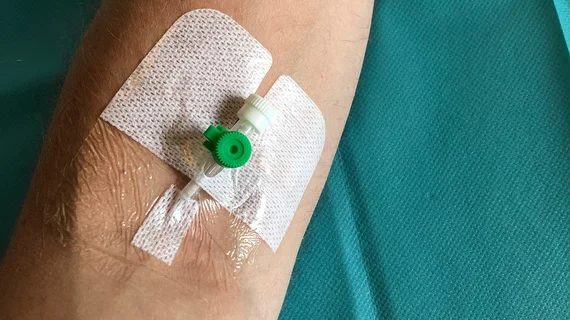How private practice and academic interventional radiology groups are using APPs differently
Private practice and academic interventional radiology groups are making ample use of advanced-practice providers to handle procedures and other billable work, with a few notable differences.
That’s according to a new analysis of survey data, published July 8 in the Journal of Radiology Nursing [1]. Both practice models are using APPs to generate similar work relative value units and revenue totals. However, academia reported using “significantly greater” full-time APPs (at about four on average) when compared to their counterparts in private practice (about two), a trend that held true even when adjusting for practice size.
Academic advance-practice providers were more likely to perform venous tunneled catheter and access-port placement than peers working in private practice. Conversely, the latter were more likely to handle joint injections, experts noted.
“The high rate of APP utilization we found in [academic] and [private] practices may suggest that practitioners have discovered an efficiency/productivity benefit from using APPs,” Ashwin Ganesh, with the University of Illinois College of Medicine in Chicago, and co-authors wrote Saturday. “Although APPs do perform a significant amount of billable services, this analysis found that APPs were responsible for a comparatively small portion (approximately 1/12th) of total annual wRVU by the IR group. Nevertheless, the APPs may remain a vital part of the IR team by performing essential no- or low-wRVU-generating work in addition to wRVU-generating activities.”
The results were derived from a 60-question survey distributed to 3,159 physicians on the Society of Interventional Radiologists’ Doctor Finder. Researchers received a total of 357 submissions representing 258 practices for an 11.3% response rate. This included 100 academic IR groups (39%) and another 158 private practices (61%), altogether spanning 40 states.
On average, APPs generated 2,442 wRVUs apiece each year across the study population (or a median of 2,017.5, with an interquartile range between 944 to 4,277). Productivity was similar between private practices, averaging 2,778 wRVUs (median of 2,603, IQR of 516 to 5,000) versus 2,190 in academia (median of 1,985, IQR 996.5 to 3,500). The two practice models also reported receiving similar percentages of revenue from APP work, with academia at an average of 50% and private practice at 55%. The top three procedures performed by APPs across both settings included paracentesis/thoracentesis (93%), venous access peripherally inserted central catheter placement (63%), and fluoroscopy-guided lumbar punctures (57%). APPs also typically did not work on weekends (74%) nor take overnight calls (90%).
“Future work should seek to explore opportunities and limitations of APP utilization in IR practices with emphasis on impact on clinical outcomes, cost efficiency, and nonprocedural work,” the authors noted.
Read much more at the link below, including potential study limitations.

